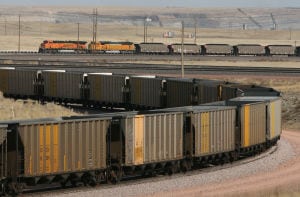$122 Million Earmarked for Coal ‘Innovation Centers’
The post $122 Million Earmarked for Coal Innovation Centers' appeared first on POWER Magazine.

Energy Secretary Dan Brouillette said the U.S. Department of Energy (DOE) is ready to make about $122 million available to establish what the DOE calls innovation centers" for coal. Brouillette and the DOE on June 26 said these centers will focus on the manufacturing of value-added, carbon-based products from coal. The facilities also would work on developing new methods to extract and process rare earth elements and critical minerals from the fuel.
It's vitally important that America develop a viable domestic supply of rare earth elements, critical minerals, and other valuable products from our vast coal resources," said Brouillette on Friday, as he toured a Pennsylvania coal mine operated by Consol Energy. This effort moves us closer to that goal. The Trump administration has been aggressively investing in research and development for novel uses of coal that have the potential to create new markets for coal and coal byproducts. Sustaining domestic coal production creates new economic opportunity for coal state economies and benefits the nation."
Consol Energy in January announced its support of a company that turns coal into carbon foam products. Consol said it had acquired a 25% equity interest in Cfoam Corp., a company whose CFoam LLC subsidiary has manufacturing facilities in Triadelphia, W.Va. Consol invested $3.5 million for its ownership share, in addition to a $1.1 million term loan to CFoam for working capital.
Carbon foam products are designed for the aerospace, industrial, military and commercial product markets, according to CFoam. The company said the insulating foam could be used for fireproof wall core material, along with exhaust systems.
The DOE in a news release said it anticipates funding innovation centers in a multiple of U.S. coal producing basins," using a competitive bidding process. The agency said it encourages new and existing coalitions of private industry, academia, national laboratories, and state and local governments" to establish the centers.
The agency said that Once established, the public-private innovation centers will research and incubate innovative mining, beneficiation, processing, and purification technologies that are environmentally sustainable." The centers also could provide educational opportunities for technicians and skilled workers in the coal sector, along with science, technology, engineering, and mathematics professionals.
Brouillette on Friday said the administration has been aggressively investing in research and development for novel uses of coal that have the potential to create new markets for coal and coal byproducts. Sustaining domestic coal production creates new economic opportunity for coal state economies and benefits the nation."
Coal Plants, Mines ClosingCoal plants and coal mines have been closing at a steady pace in recent years, as economic and regulatory challenges have diminished coal's role in U.S. power generation, and in other parts of the world. A Colorado utility on Friday said it would close its two remaining coal-fired power plants early, the latest in a string of recent retirement announcements. Another Colorado utility on June 16 said it would close its last operating plant 16 years ahead of schedule, and an Indiana utility announced the closure of some its coal units a day earlier.
U.S. coal companies have been looking to export coal to countries still reliant on the fuel for power generation, including some in Asia.
The Trump administration has made saving the coal industry a hallmark of its platform, but continued low prices for natural gas, and the growth in adoption of renewable power resources such as solar and wind, have crushed coal demand across the U.S.
The U.S. Energy Information Administration (EIA) in its latest Short-Term Energy Outlook, released June 9, said it expects coal production will decrease by 25% to 530 million short tons (MMst) in 2020. Metallurgical coal mines in Appalachia have slowed production based on reduced demand from global steel production and coking coal, and EIA forecasts production in that region will decline by 35% this year. EIA forecasts Western region production to decline by 25%, partly because of slowing demand for steam coal from key importers such as India and a decline in U.S. coal-fired generation in 2020."
The agency said it expects the share of U.S. utility-scale electricity generation from natural gas-fired power plants will increase from 37% in 2019 to 41% this year," and said coal's forecast share of electricity generation falls from 24% in 2019 to 17% in 2020."
Funding from New DOE InitiativeFunding for the innovation centers will be provided through the new Carbon Ore, Rare Earths, and Critical Minerals (CORE-CM) Initiative, which is sponsored by DOE's Office of Fossil Energy. Funding will be made available through one or more Funding Opportunity Announcements that are expected this summer by DOE's National Energy Technology Laboratory (NETL).
The agency listed several U.S. coal basins that could host an innovation center, including the Applachian, Illinois, and Powder River basins, the major U.S. coal-producing areas. It listed a half-dozen other, smaller basins, noting the basins cover 22 states, including Alaska.
These planned innovation centers and other efforts supported by the new CORE-CM initiative will build on the amazing work that NETL and our partners have been doing for years on rare earth elements, critical minerals, and value-added products from coal," said Steven Winberg, assistant secretary for Fossil Energy, in a news release. We're excited about our path forward and the economic opportunity it creates for coal producing regions of the country and the United States."
-Darrell Proctor is associate editor for POWER (@DarrellProctor1, @POWERmagazine).
The post $122 Million Earmarked for Coal Innovation Centers' appeared first on POWER Magazine.